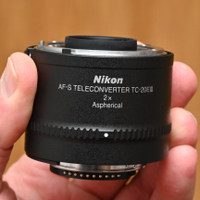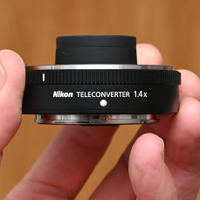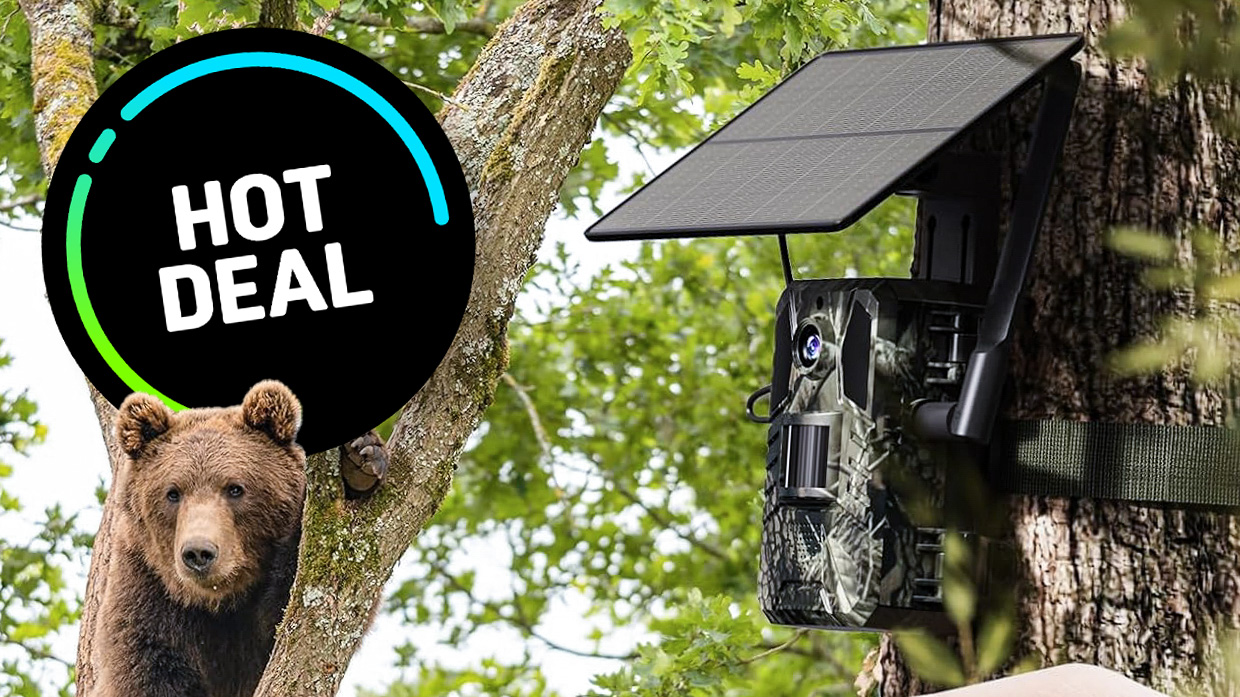Digital Camera World Verdict
I’m sold on the Nikon AF-S TC-14E III. It gives a 1.4x magnification of focal length and maximum magnification factor for close-ups, with minimal degradation of image quality. And it’s a whole lot more cost-effective and easier to lug around than a hefty additional super-telephoto lens.
Pros
- +
1.4x magnification of focal length
- +
Small, lightweight and cost-effective
- +
High-quality, weather-sealed build
Cons
- -
1 f/stop aperture reduction
- -
Slight degradation of lens performance
- -
Limited lens compatibility range
Why you can trust Digital Camera World
This is the 1.4x version of Nikon’s latest (and probably last) F-mount teleconverter, designed for Nikon cameras and compatible F-mount Nikon telephoto lenses. It’s primarily designed for DSLRs but can also be used on Z-mount mirrorless cameras via an FTZ or FTZ II mount adapter. As such, it’s one of the best teleconverters on the market. Typically for a 1.4x teleconverter, the focal length of the attached lens is magnified by a factor of 1.4x, with a 1 f/stop reduction in aperture rating, so a Nikon AF-S 70-200mm f/2.8E FL ED VR zoom effectively becomes a 98-280mm f/4 lens.
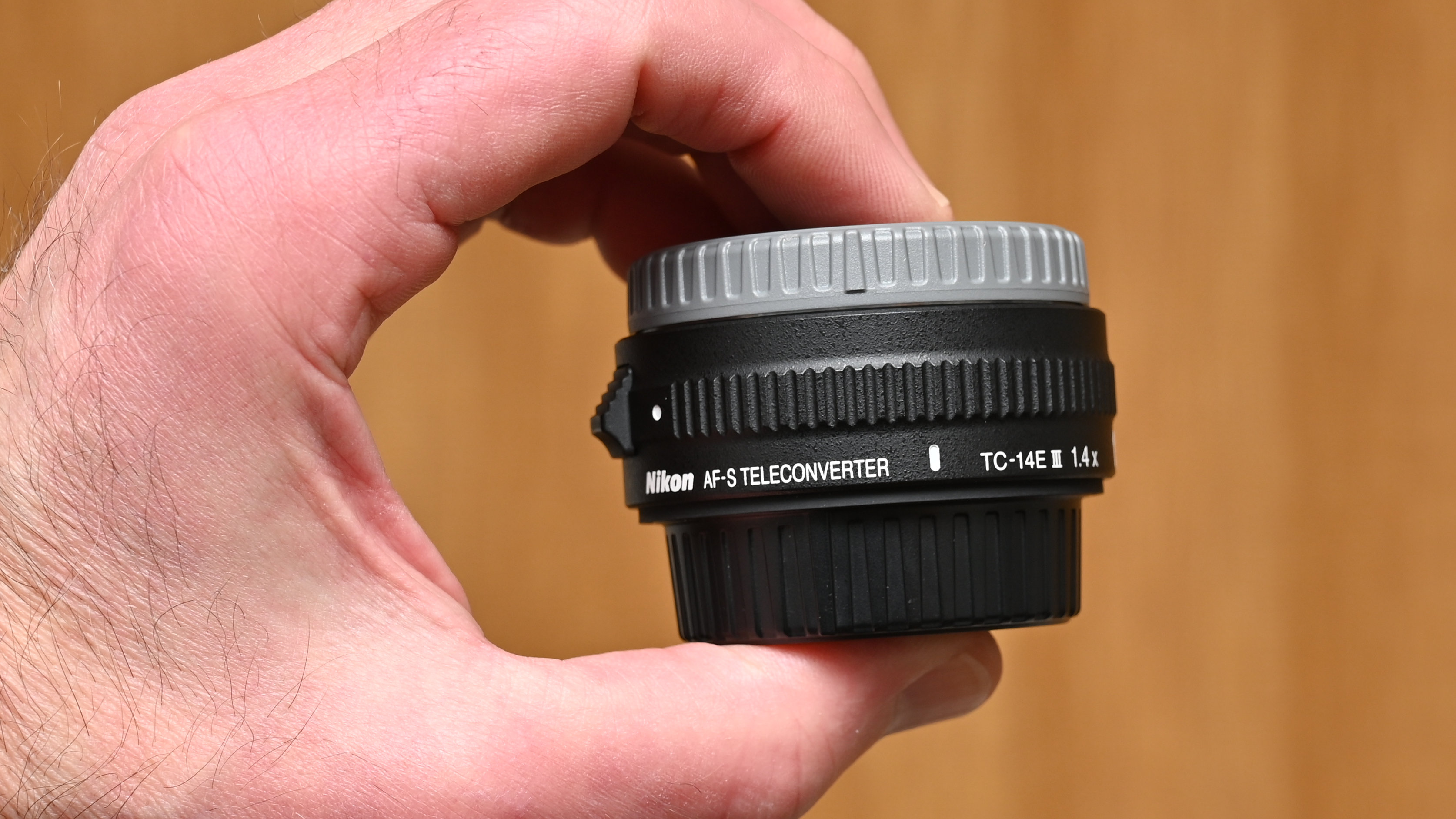
The aperture reduction naturally means you’ll suffer a drop in shutter speeds but can also rule out autofocus in some cases. For example, if you use the teleconverter with a Nikon AF-S 80-400mm f/4.5-5.6G ED VR lens, you’ll need a DSLR that supports autofocus at f/8. A plus point is that, when using the teleconverter, the minimum focus distance of the main lens remains unchanged. You therefore get a 1.4x boost in the maximum magnification ratio, which can edge into macro territory for close-ups with some lenses.
Nikon AF-S TC-14E III: What's changed?
As billed in the product name, this is the third edition of Nikon’s TC-14E teleconverter. Headline upgrades include a new optical path to boost image quality, along with better build quality that adds weather seals and fluorine coatings on the outer elements. However, the mechanical design precludes fitment of older Nikon AF lenses with an aperture ring, so it’ll only work with newer AF-S G and E type lenses, and there’s no mechanical autofocus screw-drive, again ruling out AF rather than AF-S lenses. Here's Nikon’s official teleconverter and lens compatibility list.
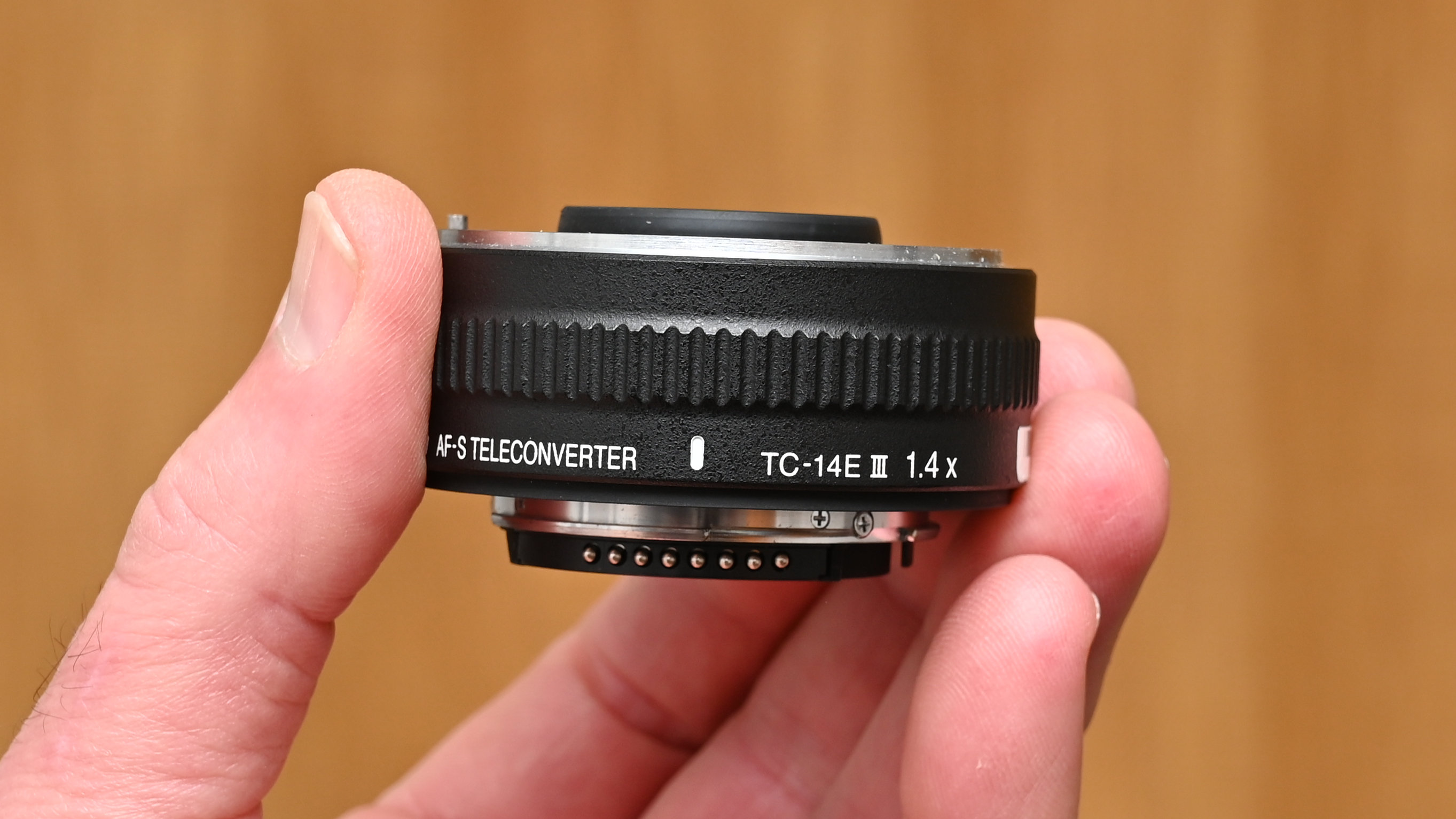
Nikon AF-S TC-14E III: Specifications
| Mount | Nikon F |
| Lens construction | 7 elements in 4 groups |
| Focal length multiplier | 1.4x that of main lens |
| Aperture reduction | 1 f/stop |
| Minimum focus distance | Same as main lens |
| Maximum magnification | 1.4x that of main lens |
| Dimensions | 64 x 24.5mm |
| Weight | 190g |
Nikon AF-S TC-14E III: Price & Availability
The Nikon AF-S TC-14E III is widely available from photographic retailers around the world, as well as from Nikon’s own regional online stores. Priced at $497 / £479 / AU$799, it might seem pretty pricey for such a small bit of kit but it’s naturally a whole lot cheaper than buying an additional super-telephoto lens for when you need a bit of extra reach.
Nikon AF-S TC-14E III: Design & Handling
I like that the teleconverter looks and feels like a pancake lens, measuring just under an inch thick. It’s also really lightweight, at a mere 190g. That’s just a tiny fraction of the size and weight of carrying around an extra telephoto or super-telephoto lens.
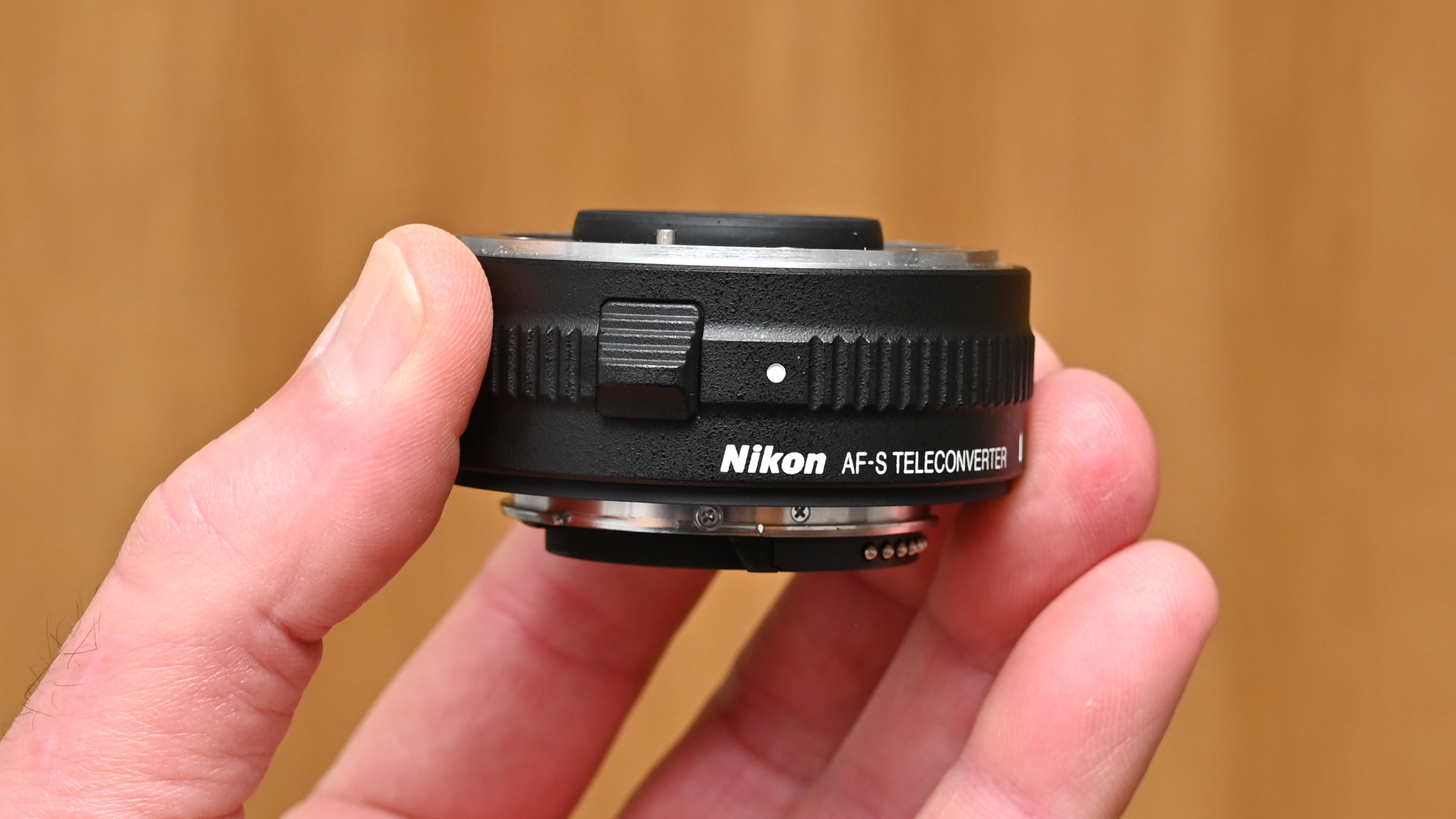
Although lightweight, the build quality feels very solid and robust. That’s an important point if you’re mounting a big, heavyweight lens to it, like the Nikon AF-S 400mm f/2.8E FL ED VR that I used during testing, which weighs in at a comparatively massive 3,800g. Version III is upgraded for greater durability and features weather seals. I like that the new fluorine coatings on the front and rear elements repel moisture and grease, and make the surfaces easier to clean.
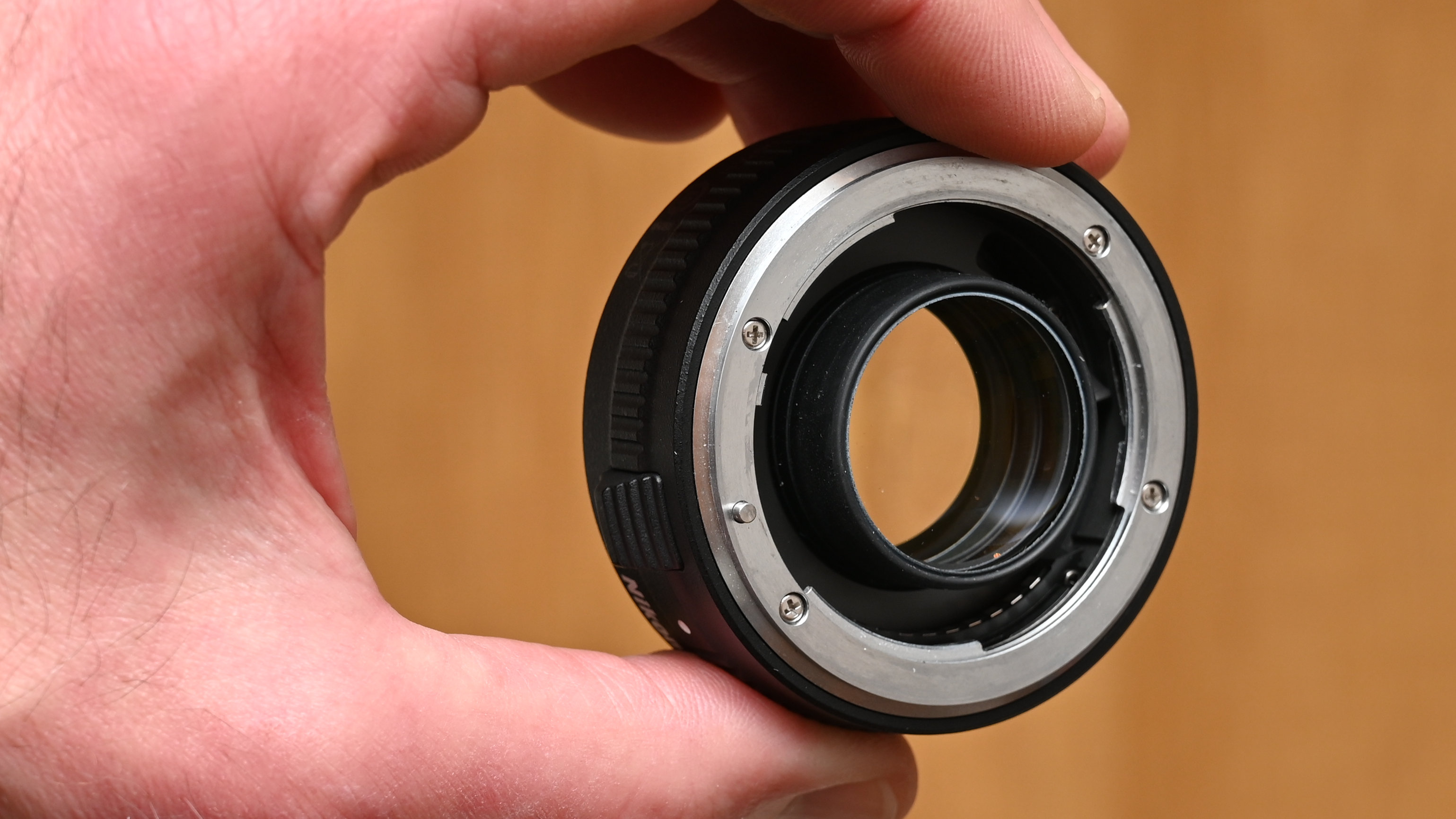
Although small, the teleconverter packs no less than 7 optical elements arranged in 4 groups. The optical design is revised, with claims of a reduction in chromatic aberration, while full electronic connectivity is maintained between the main lens and the host camera body.
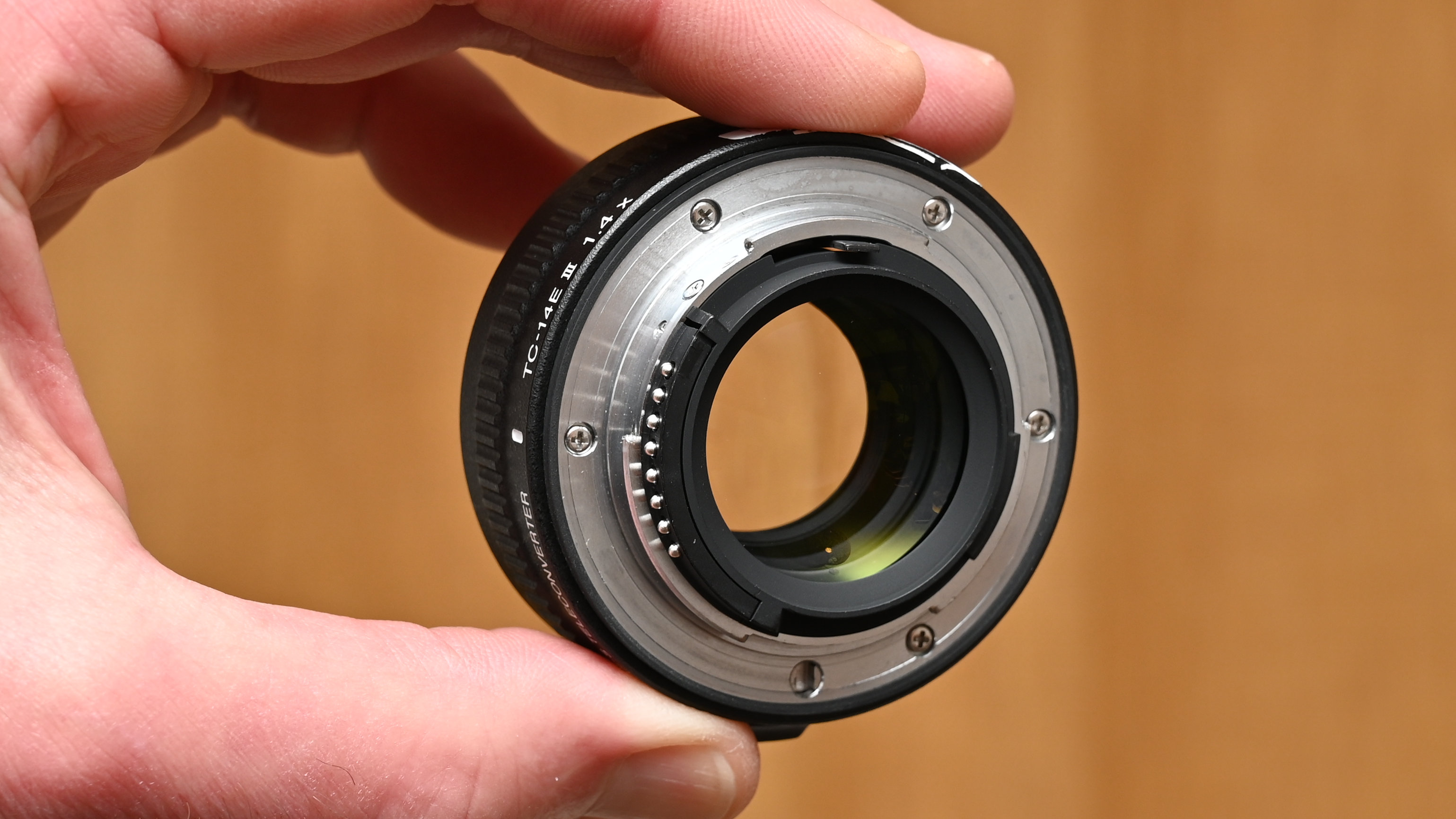
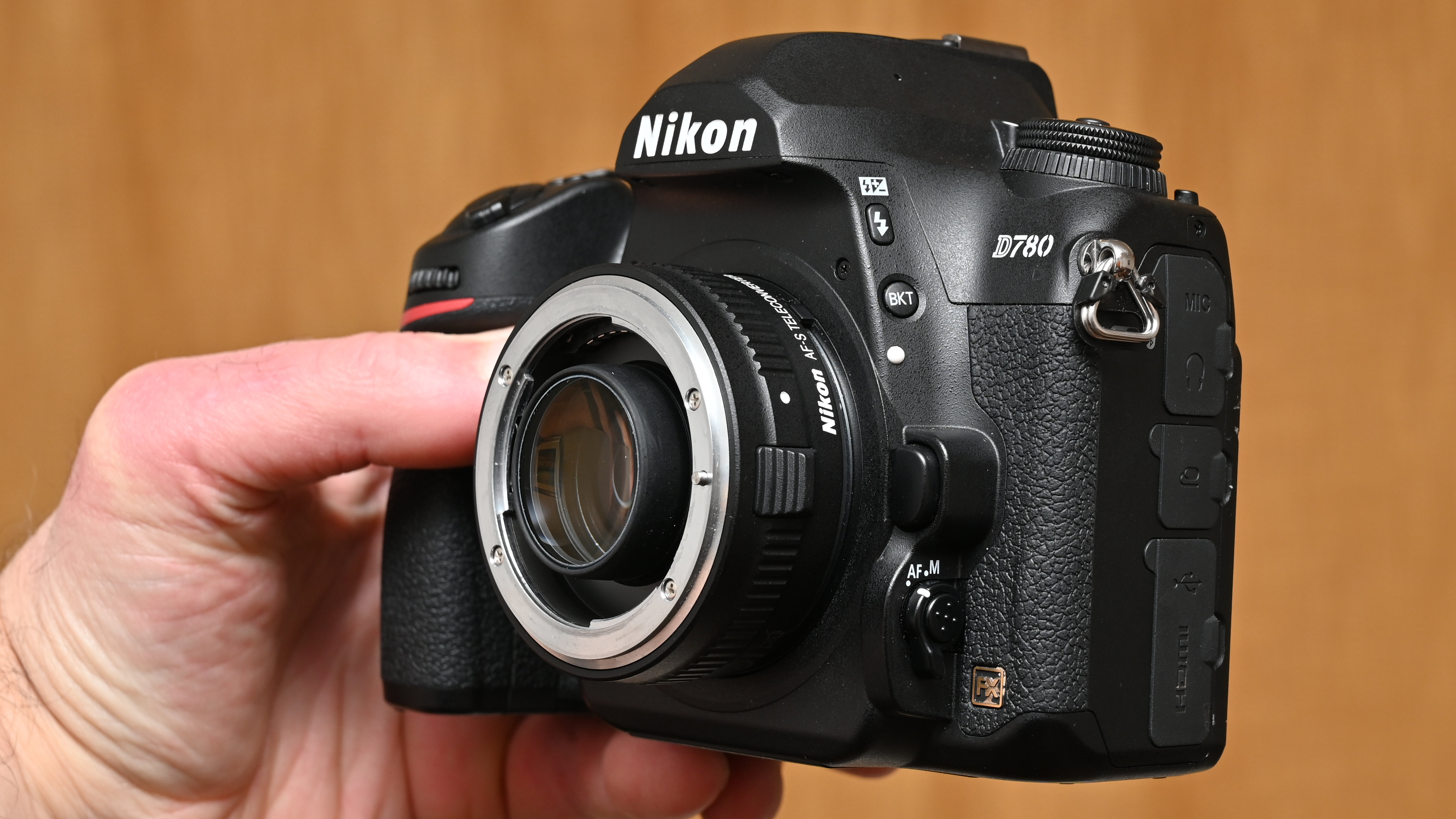
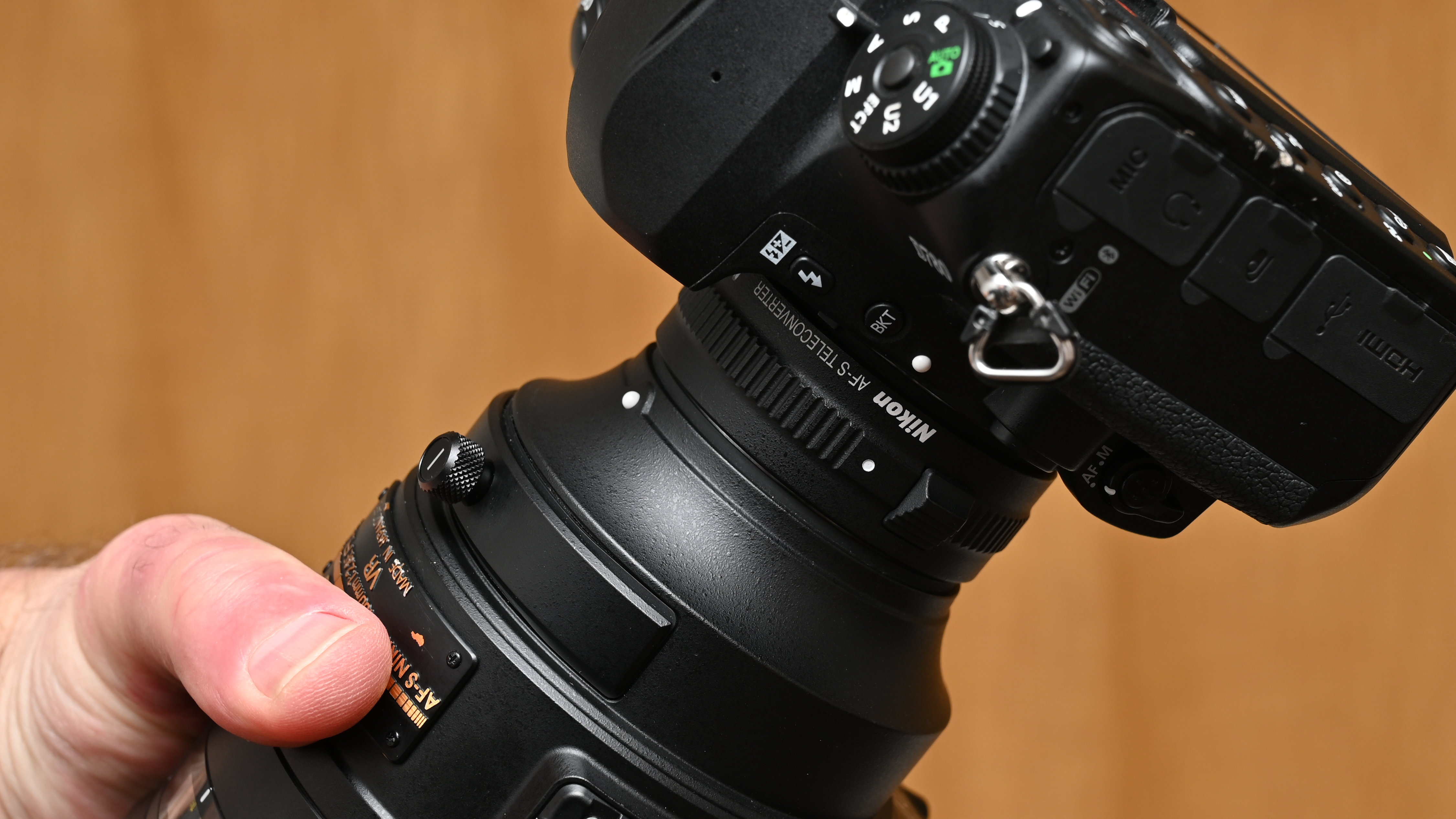
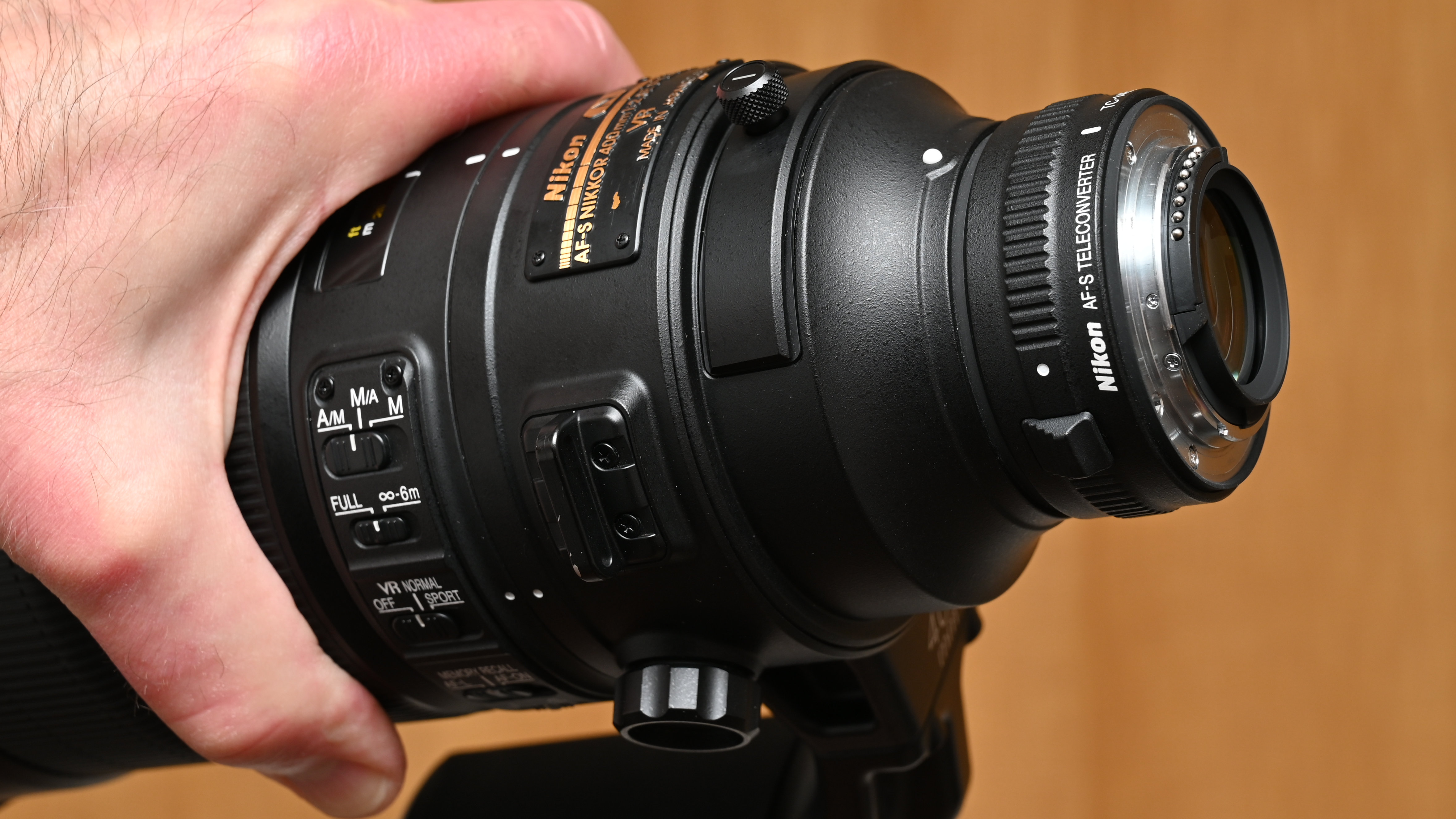
Nikon AF-S TC-14E III: Photo Performance
There’s always a bit of a question mark over the performance of teleconverters, compared with using a bigger lens fitted directly to the camera body. In essence, a teleconverter acts a bit like a glorified magnifying glass, enlarging the central area of the image circle produced by the main lens and passing it through to the camera.
On the plus side, you’re only effectively using the central region of the image circle, where quality is typically best. However, a teleconverter will also draw more attention to any flaw or failure. Autofocus speed can also take a hit, along with the effectiveness of optical VR (Vibration Reduction).
While testing the teleconverter with a high-performance Nikon AF-S 400mm f/2.8E FL ED VR and a Nikon D780 camera body, I found that autofocus speed remained very snappy and was well able to track moving subjects. The performance of VR remained pretty much the same as well, giving me about 4-stop effectiveness in real-world handheld shooting when taking the longer focal length into account.
There’s surprisingly little impact on image quality when using this teleconverter. Sharpness remains excellent across the entire image frame and any increase in color fringing is very negligible. Overall performance is outstanding, much the same as when using Nikon’s newer Z-mount edition of the teleconverter.
Nikon AF-S TC-14E III: Sample Images
For the sake of comparison, the following gallery includes a series of shots taken with a Nikon D780 and a Nikon AF-S 400mm f/2.8E FL ED VR on its own, as well as with both Nikon AF-S TC-14E III and Nikon AF-S TC-20E III teleconverters. This shows differences between using the lens natively, as well as with the 1.4x and 2x teleconverters.
The first sequence was taken from a viewpoint overlooking the city of Bath, UK, from a distance of half a mile, on an overcast morning. Due to deteriorating weather conditions with strong winds and heavy rain, the subsequent shots were taken indoors with bounced flash.
All of the example images were taken using a sturdy tripod and exposure delay mode and shot several times to ensure the consistency of results. As per our usual testing regime, all of these images were taken in addition to the lab-test shots that we captured, based on the use of official test charts.




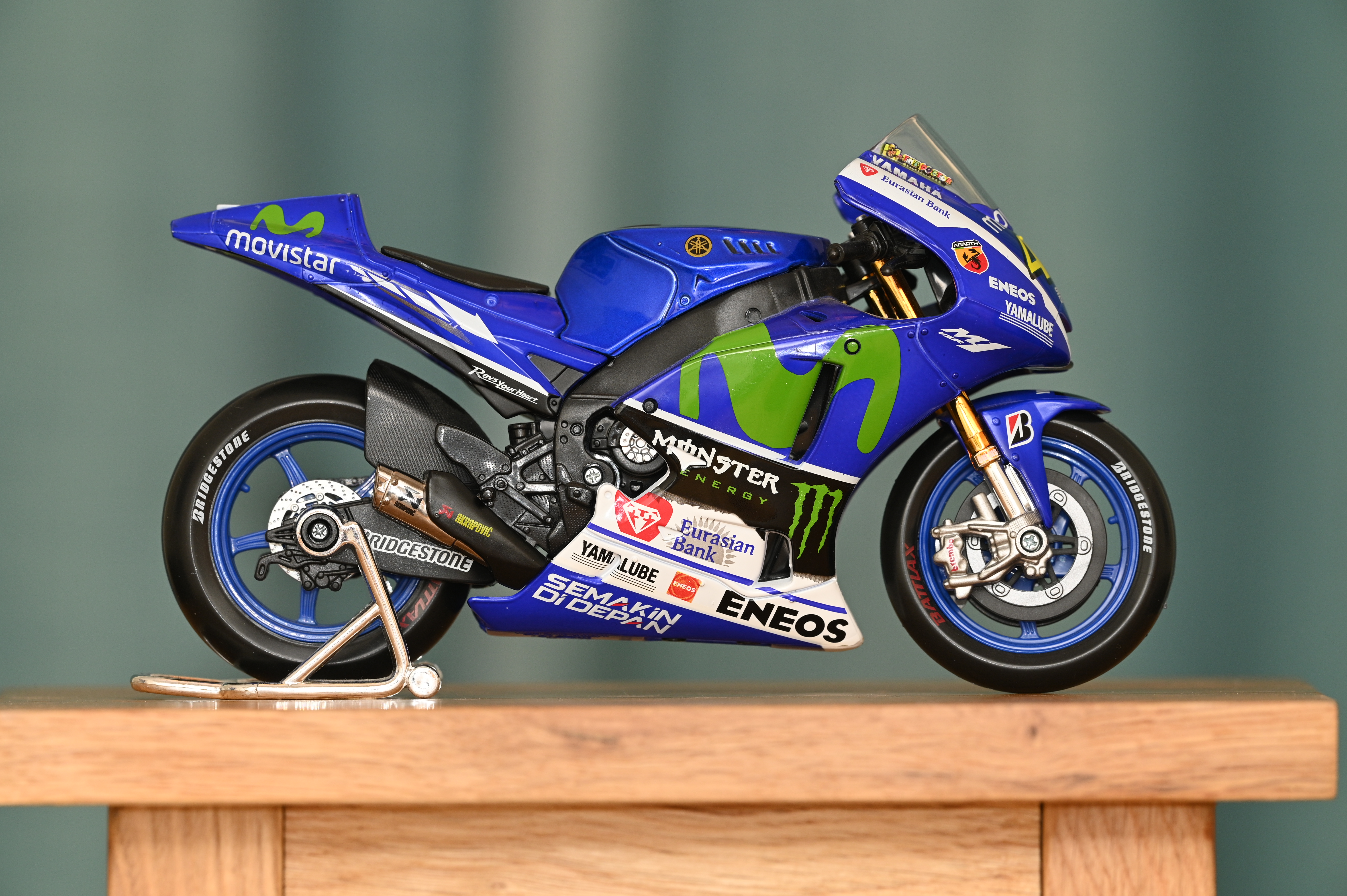
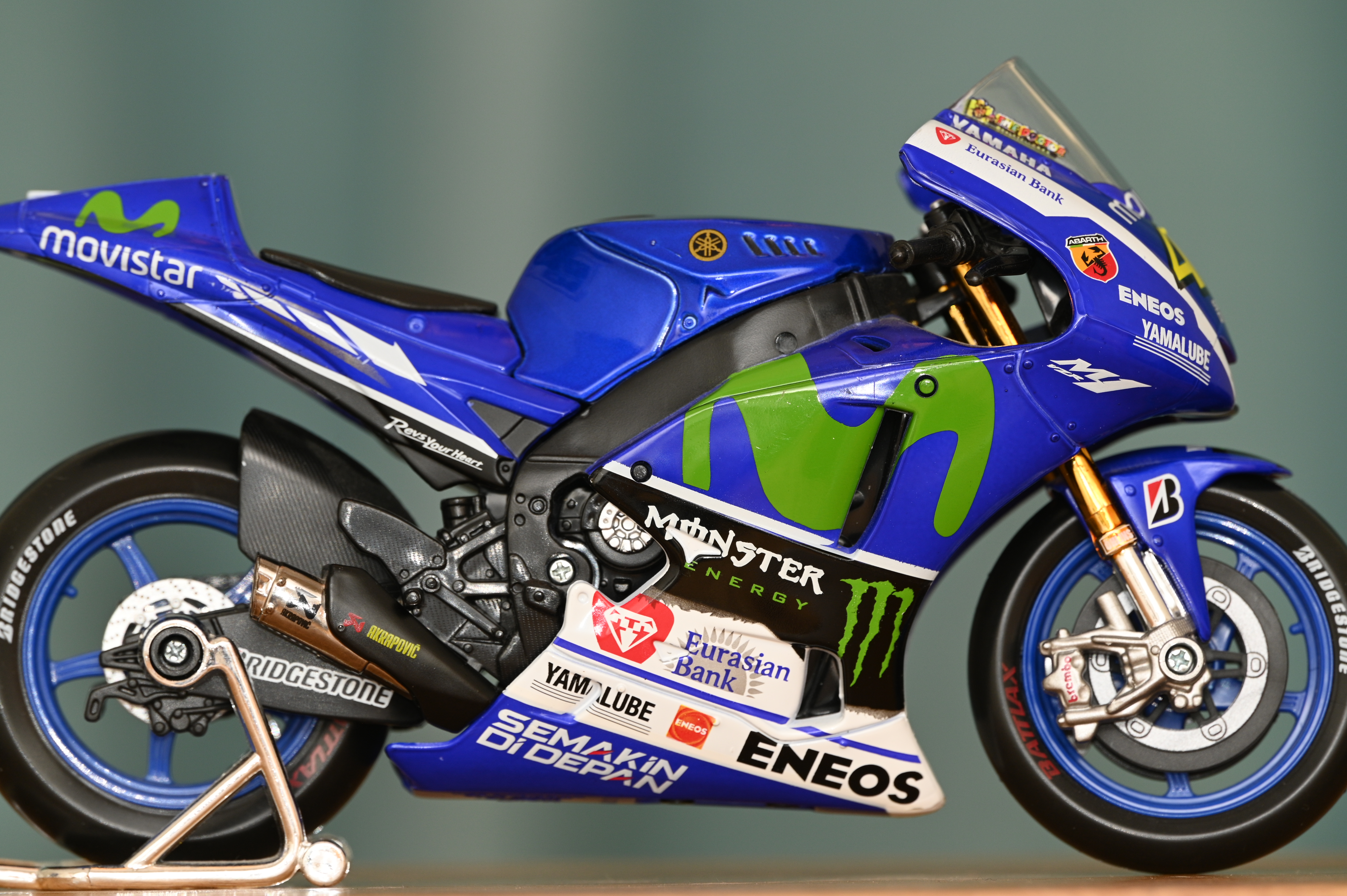









Nikon AF-S TC-14E III: Lab Results
We run a range of lab tests under controlled conditions, using the Imatest Master testing suite. Photos of test charts are taken across the range of apertures and zooms (where available), and then analyzed for sharpness, distortion, and chromatic aberrations.
We use Imatest SFR (spatial frequency response) charts and analysis software to plot lens resolution at the center of the image frame, corners, and mid-point distances, across the range of aperture settings and, with zoom lenses, at four different focal lengths. The tests also measure distortion and color fringing (chromatic aberration).
Sharpness:
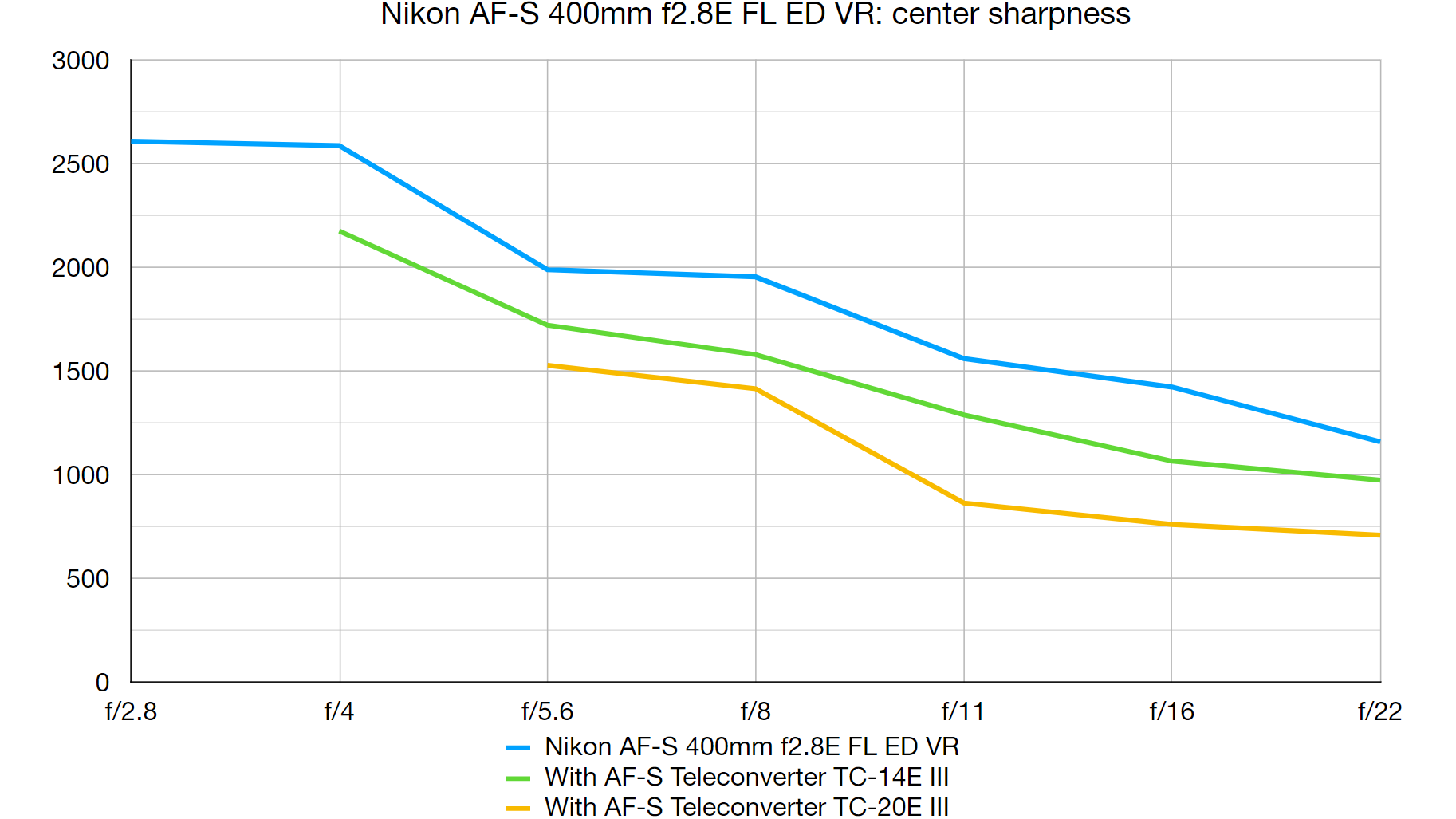
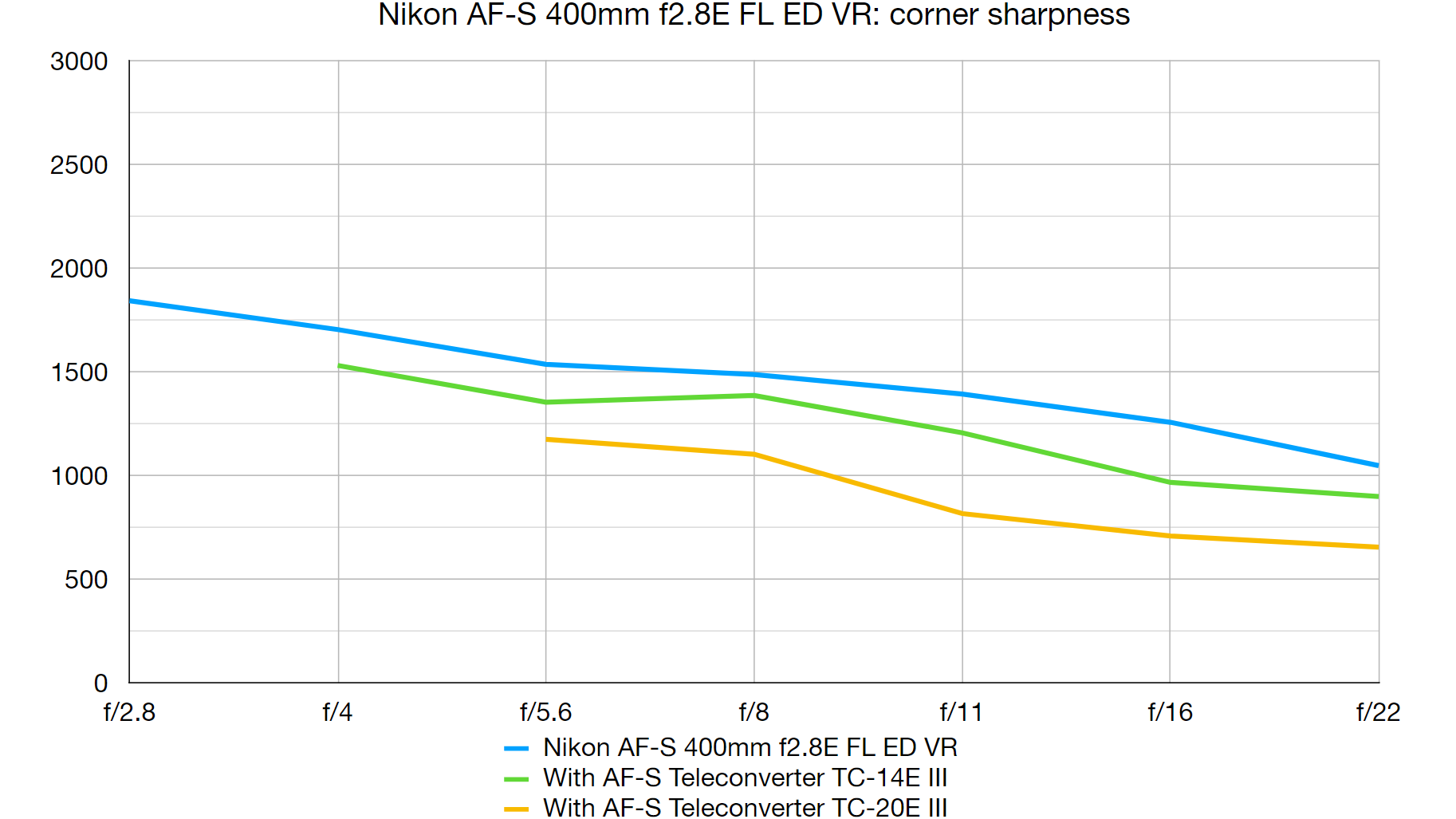
In our lab tests, the outstanding sharpness of the Nikon AF-S 400mm f/2.8E remained largely unaffected when adding the 1.4x teleconverter, compared with using most rival teleconverters.
Fringing:
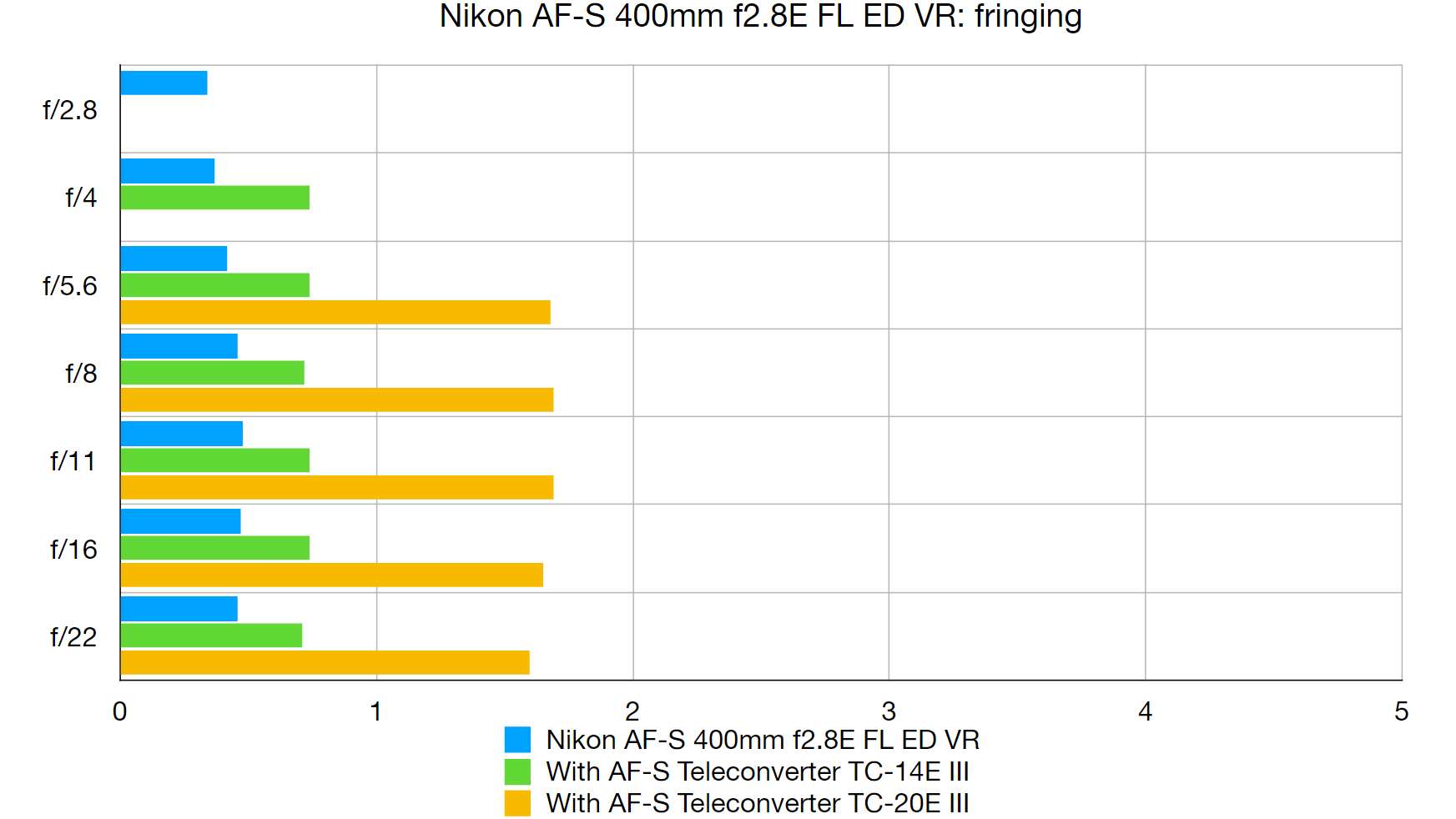
There’s only a marginal increase in color fringing towards the extreme edges and corners of the image frame, again putting this Nikon 1.4x teleconverter ahead of most competitors.
Distortion: -0.26
The slight pincushion distortion of the native lens is switched to very minor barrel distortion with the teleconverter attached.
Nikon AF-S TC-14E III: Verdict
I love lenses. I certainly don’t need much of an excuse to add to my collection. However, when you get into super-telephoto territory, extra lenses can be fiendishly expensive to buy, and very heavy to carry around. The Nikon AF-S TC-14E III gives me a useful boost in telephoto reach at comparatively little expense. And being just an inch thick and weighing only 190g, I can pop it in my kit bag and not even notice the difference. Performance of the main lens remains excellent in terms of autofocus speed, VR, and image quality. It’s a win!
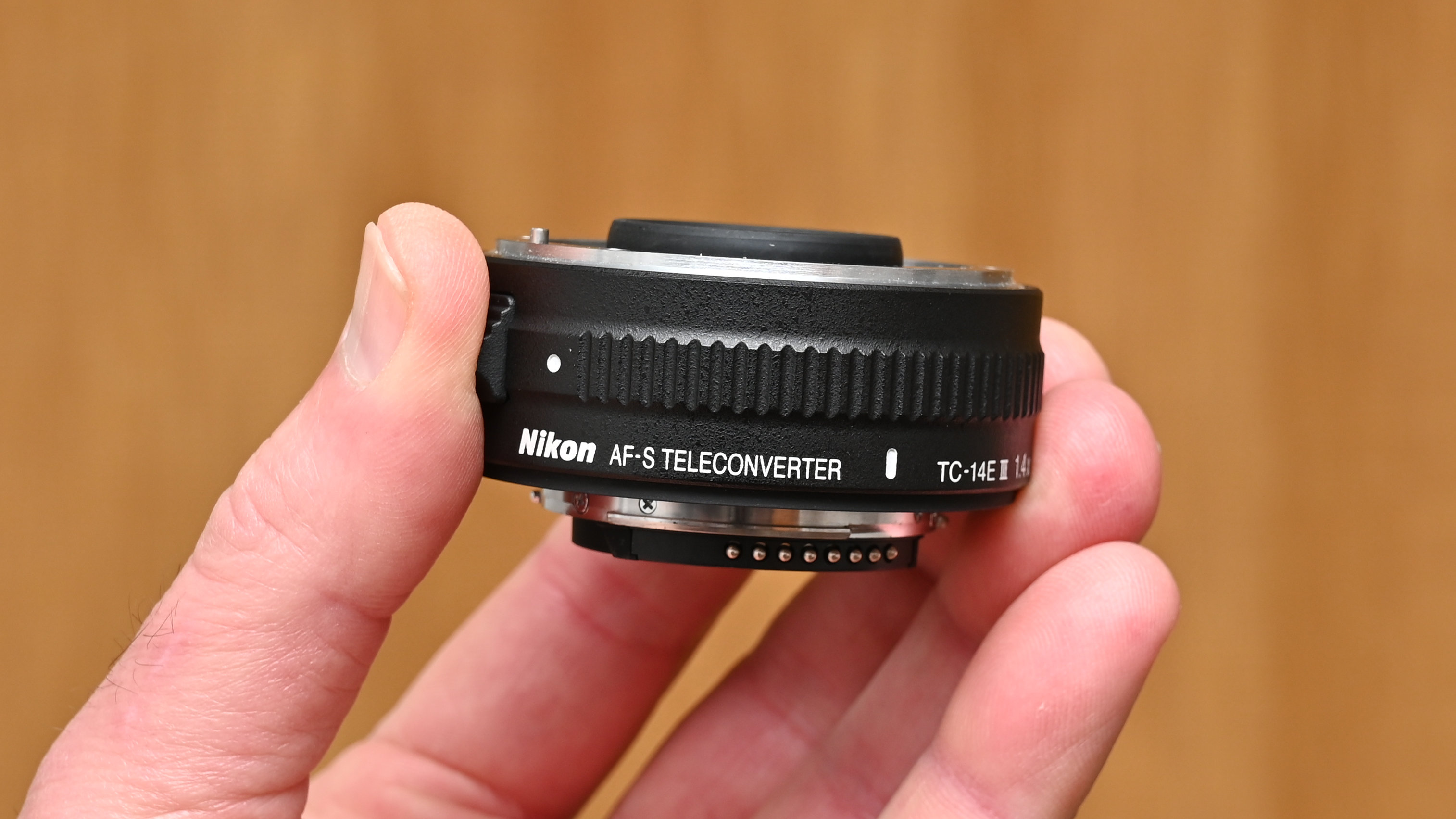
Should you buy the Nikon AF-S TC-14E III?
✅ Buy this...
- You need more reach
- Much cheaper than an extra lens
- Good build and performance
🚫 Don't buy this...
- You lose an f/stop
- Limited lens compatibility
- Slight performance degradation
Alternatives
The Nikon AF-S TC-20E III gives 2x magnification rather than 1.4x, so it’s more powerful but bigger and heavier, and you lose two f/stops in aperture instead of just one.
Got a Nikon Z-system camera? The Nikon Z Teleconverter TC-1.4x is the native equivalent for mirrorless camera bodies and compatible Z-mount telephoto lenses.
Matthew Richards is a photographer and journalist who has spent years using and reviewing all manner of photo gear. He is Digital Camera World's principal lens reviewer – and has tested more primes and zooms than most people have had hot dinners!
His expertise with equipment doesn’t end there, though. He is also an encyclopedia when it comes to all manner of cameras, camera holsters and bags, flashguns, tripods and heads, printers, papers and inks, and just about anything imaging-related.
In an earlier life he was a broadcast engineer at the BBC, as well as a former editor of PC Guide.


